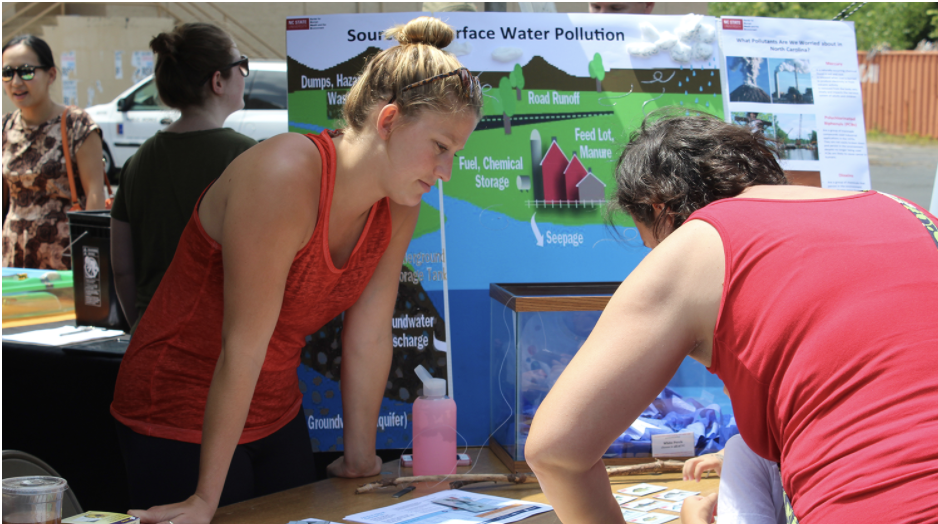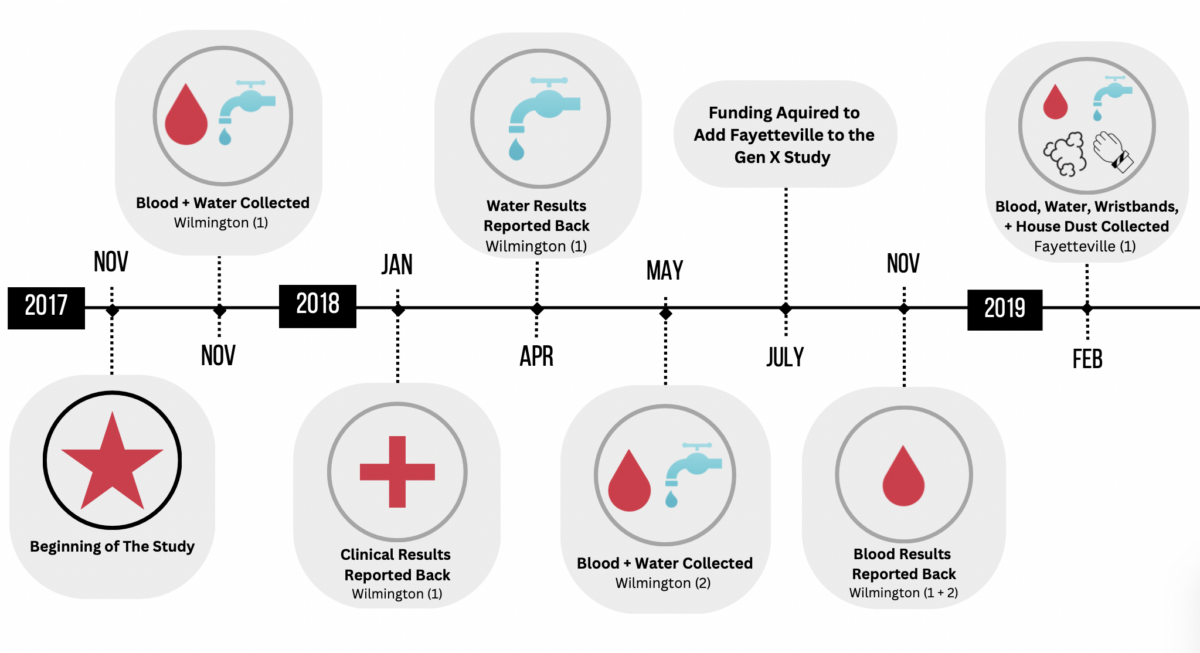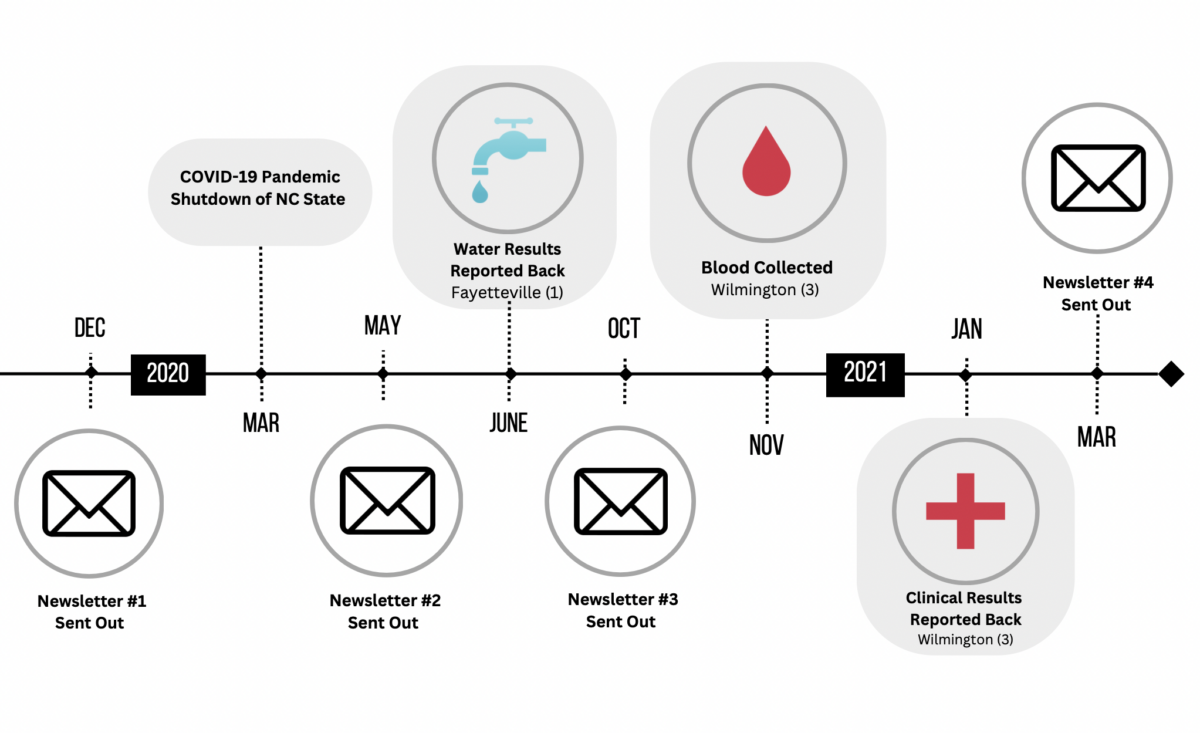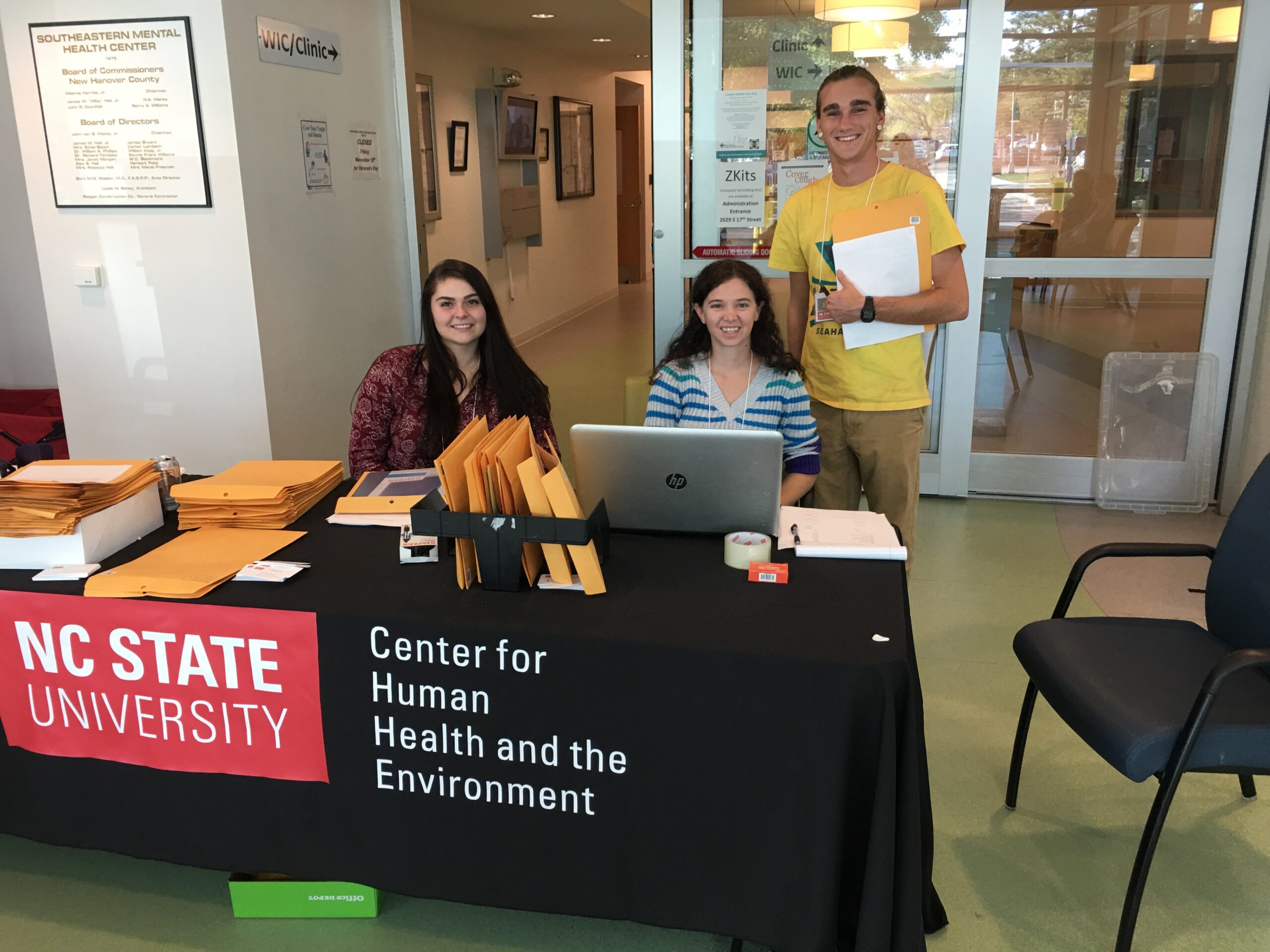Study Timeline
GenX Study Over Time

The Study’s Beginnings
The GenX Exposure Study was started in November 2017 to help New Hanover County residents answer questions related to drinking water exposure to the chemical GenX. The study enrolled 344 New Hanover County residents and collected blood and drinking water samples to measure for GenX and other PFAS chemicals. In February 2019, we expanded the study to the Fayetteville area to assess GenX and other PFAS exposure among private well owners living near the Fayetteville works plant. We enrolled 153 individuals from the Fayetteville area. In this community, we collected blood from individuals and tap water, well water, and dust from people’s homes. We also asked a subset of individuals to wear silicone wristbands for five days to measure PFAS exposure in their environment.



Shifting our Focus:
Becoming a Health Study
In February 2020, we received new funding to transition the focus of the GenX Exposure Study from an exposure study to a health study. We expanded the study to include communities along the Cape Fear River basin from Pittsboro on the Haw River, to Fayetteville area private well community, and Brunswick and New Hanover Counties in the Lower Cape Fear region. We asked all the people who participated in 2017-2019 to enroll in this new study. We also recruited volunteers from these areas. The plan for this study is to follow people for at least five years and up to 20 years to learn more about how PFAS chemicals impact human health.

Where to Next?
From November 2020 – November 2021, we recruited over 1000 people for the GenX Exposure Study Health Followup. To understand PFAS exposures, we collected blood from all participants and are analyzing it for over 40 PFAS chemicals. To understand health effects, we have a health questionnaire, are analyzing blood samples for clinical outcomes, and assessing response to Covid vaccine through blood samples. Right now, we are focusing on thyroid related health outcomes and covid vaccine response, but in the future we can use stored samples to evaluate many more health outcomes.